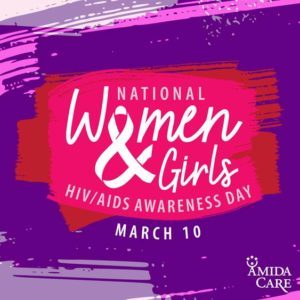In the Fight to End HIV, Don’t Leave Women Behind

National Women and Girls HIV/AIDS Awareness Day
Women don’t always immediately come to mind when we think about those most affected by HIV, yet they continue to be heavily impacted, particularly women of color. As New York and the nation advance toward ending the HIV/AIDS epidemic, it’s important to remember that women and girls urgently need our efforts. On March 10, National Women and Girls HIV/AIDS Awareness Day, we focus on increasing outreach and education around HIV testing, treatment, and prevention for women.
Not all women are equally affected by HIV. Though HIV diagnoses among women in the U.S. have declined in recent years, more than 7,000 women received an HIV diagnosis in 2017, according to the Centers for Disease Control (CDC). Of new diagnoses, 59% are among Black women, 20% are white, 15% are Latinx, and 4% are other populations. In New York City, 90% of all women who tested positive for HIV were Black or Latina, with those in Brooklyn and the Bronx comprising the largest segment. Transgender women are similarly affected and are 49 times more likely to be living with HIV than the general population. In the U.S., it is estimated that 14% of trans women are living with HIV, with Black trans women accounting for 44% and Latina trans women accounting for 26% of diagnoses.
To make matters worse, not all women and girls living with HIV are getting the care they need. Of all women with HIV nationwide, only 69% have received care, 51% stayed in care, and 51% are virally suppressed. Women who receive treatment and become virally suppressed can live longer, healthier lives and cannot transmit HIV to others through sex, so it is vital to engage everyone living with HIV in treatment (Undetectable equals Untransmittable, U=U).
Some of the reasons for these health disparities are the same as among men, such as living in poverty with poor access to health care, compounded by stigma creating a barrier to testing and treatment. However, additional factors leave women particularly vulnerable, including early sexual abuse and trauma.
The vast majority of HIV transmissions for women are from sex with a male partner who has HIV. Access to and awareness of pre-exposure prophylaxis (PrEP) –a game-changing pill that is over 90% effective in preventing HIV – is critical. Using PrEP means you don’t have to rely on your sexual partner for protection against HIV, and it’s a powerful way to take control of your sexual health.
As we get closer to ending the epidemic, we must work to increase awareness, promote educational programs, and enhance sexual health services so that women and girls don’t get left behind.
Resources
- CDC Information on Women and AIDS
- Information for Pregnant Women
- Office on Women’s Health: Women and HIV
- Iris House
- Amida Care can also help. Amida Care is a Medicaid Special Needs Health Plan (SNP) that currently serves 7,500+ members throughout the five boroughs of New York City, including people living with or those placed at elevated risk for HIV. Please contact us at 1-855-GO-AMIDA to be directed to more health resources.
